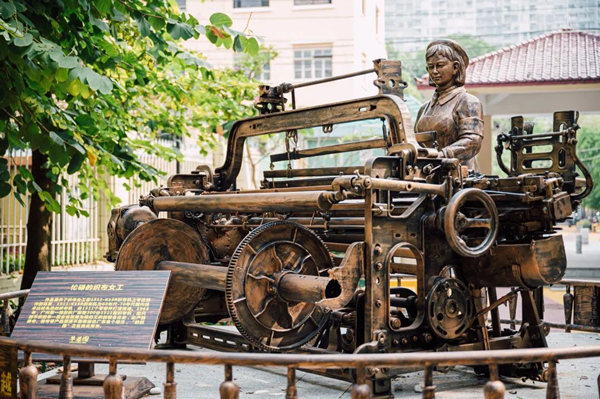Haizhu's Binjiang Street preserves Guangdong's textiles history
Binjiang Street in Guangzhou's Haizhu district is also known as Textile Street due to it being a Guangdong textile industry cluster in the last century.
In 1933, Guangdong released a plan to completely localize the cloth industry. In 1935, Guangzhou built the initial production workshop of Guangdong Textile Factory. In 1937, the South China Sewing Machine Factory on Textile Street produced the first locally made household sewing machine in Guangzhou, breaking the American monopoly on this product.
After the War of Resistance Against Japanese Aggression (1931-45), Guangzhou No 1 Cotton Textile Factory introduced advanced indigo denim production lines, taking the lead in filling the gap in China's denim production. More than 40 denim clothing series of products were sold at home and abroad. The universal sewing machine and shoe sewing machine developed by South China Sewing Machine Factory also filled the gap in China's manufacturing industry.
Textile Street gradually formed an early textile industry cluster in Guangzhou and its nearby wharf was also named Textile Wharf. They formed the cradle of Guangzhou's textile industry.
In recent years, Haizhu's efforts to protect historic buildings have ensured that there are many old textile factories remaining on Binjiang Street. There are also many fashionable blocks that attract many tourists to the area.

The statue of a weaver on Binjiang Street. [Photo/WeChat account: gzhzfb]
All rights reserved. Presented by China Daily

